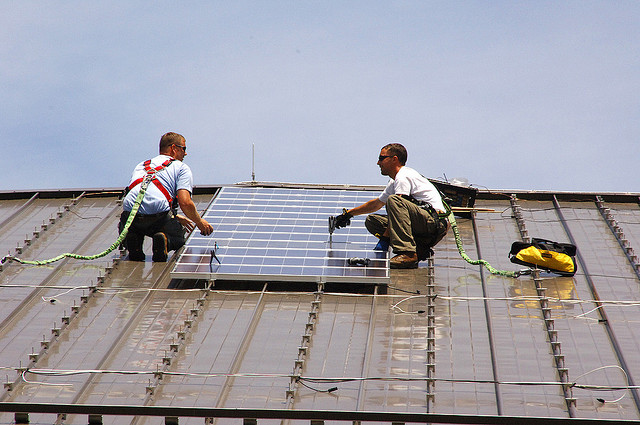
What the U.S. is doing — and what ordinary Americans can do — to counter China-made solar.
This is the final in a series looking at the true cost of the Chinese solar industry. Read parts one, two and three.
The environmental destruction of China’s renewables manufacturing, in hand with the illegal government export subsidies and tax incentives for solar, make it extremely difficult for legitimate, law abiding global manufacturers to compete.
In response, the United States issued antidumping tariffs on certain Chinese solar panels in 2012, but many Chinese companies found ways around the duties. Earlier this year, the U.S. Commerce Department “imposed steep duties on importers of Chinese solar panels made from certain components” after U.S. manufacturer SolarWorld Industries America filed a petition seeking relief.
The duties come after a lengthy trade dispute between the U.S. and China over solar manufacturing. China’s unfair trade practices violate World Trade Organization agreements and create economies of scale that inhibit foreign production.
Roughly 95% of China’s solar production was exported in 2010. China’s export driven market was established by “aggressive” Chinese government subsidies and handouts to solar manufacturers to cash in on consumer subsidies in other countries. But WTO rules “prohibit export subsidies” in order to “prevent governments from trying to help their companies gain in world markets.”
As the New York Times explained:
China’s method is straightforward: it sets forth industry-specific Five-Year Plans and then uses all forms of national and local subsidies and other governmental support to quickly transfer jobs, supply chains, intellectual property and wealth, to the permanent detriment of U.S. and global manufacturers.
Both national and local Chinese governments offer illegal subsidies to exporting solar manufacturers. Subsidies range from “heavily discounted land” and tax exemptions to “export assistance grants” and “export insurance at preferential rates.” With a constant supply of up-front cash grants and loans, Chinese solar manufacturing companies develop huge capacity. Because these products are destined for global trade purposes China’s subsidies are illegal.
Case Study: LDK Solar
The unprecedented financial relationship between solar manufacturing companies and the Chinese government is illustrated by LDK Solar’s experience in Xinyu, China.
When the solar manufacturing company settled in Xinyu in 2005, it was welcomed with a $29.3 million cash grant from the local government. By the end of 2007, LDK solar borrowed a total of $264.1 million from local banks. LDK Solar also qualified for various tax exemptions at the local and national level.
With such endless subsidies, LDK Solar has been able to produce panels at artificially low costs and illegally export to the United States. Even LDK’s Chief Operating Officer Tong Xingxue refers to his company as “an export-oriented enterprise.”
And if most of LDK Solar’s products are exported, those government subsidies violate WTO agreements.
In the 2012 SolarWorld trade case, the Commerce Department included LDK Solar in the list of Chinese companies who used illegal subsidies to artificially decrease the cost of solar panels. LDK will have a 31 percent tariff on all goods shipped to the United States.
What Ordinary Americans Can Do
Americans will never see a world with good jobs, clean air and water, and healthy communities if we ignore the conditions created by our consumption, especially when it supports the environmental and human costs of unrealistically cheap products.
The label “Made in the U.S.A.” goes beyond a mere concept of patriotism. It means supporting the businesses, employees, and communities in which the products are made; it supports American companies and their workers who meet stringent U.S. standards for clean air, clean water, and safe workplaces; and it means not rewarding those companies that have moved their operations, investment dollars, and jobs to foreign countries and take advantage of some of the most vulnerable communities.
For all the people interested in supporting sustainable growth in a solar industry that ensures environmental protection through all stages of production and respects the health, safety, and well-being of workers and communities, here are some proactive steps you can take:
- Support the U.S. solar industry, promoting American-Made solar products as the environmentally responsible consumer choice while supporting the over 29,850 people who currently work in Solar Panel manufacturing in the United States;
- Join its allies in supporting the U.S. trade cases against heavily and unfairly subsidized Chinese renewable energy products;
- Challenge U.S. solar producers to employ even stricter environmental and labor protections; and
- Encourage the Chinese government to enforce its own environmental and labor laws and shift its solar export subsidies to incentives for domestic market consumption.
A final thanks to Michael Mignano and Erin Kelly for providing much of the research in this blog series.
